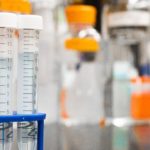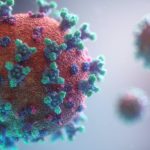In 2019 over 600,000 people died from cancer in the United States alone.
One of the primary drivers behind these high mortality rates for cancer is late diagnosis. For this reason, we’re seeing increasing demand for noninvasive methods to detect cancer easily and at earlier stages. In this podcast, we explore and analyze different methods for noninvasive cancer detection from the mucus in our lungs to the blood flowing through our veins and the software in our imaging systems.
The fact is, early detection of cancer is a real opportunity to improve patient outcomes and channel patients to the appropriate treatments earlier with the idea that early detection and early screening helps prevent some of these later-stage cancers and reduce the cost in our healthcare system.
There’s a strong opportunity currently due to recent advances in biomarker detection and liquid biopsy as well as advances in artificial intelligence and computer science in general that allow us to do more sophisticated work in imaging analysis. This gives us the opportunity to look at new ways to better screen patients for cancer. Right now, a lot of the existing screening methods have high rates of false positives, which can lead to great expense and unnecessary procedures.
Why Early Cancer Diagnosis Matters
The idea of early detection as the best, most effective approach to cancer care is really not new. As far back as 1907, the British physician Charles Child observed that cancer itself is not incurable. It’s the delay in treatment that makes it difficult to cure later on. So he pushed an early public campaign for early intervention.
Some patients whose cancers are detected and truly treated early may have better long term survival than patients whose cancers are not found until symptoms appear. Unfortunately, effective screening tests for early detection do not exist for every type of cancer, and for cancers for which there are widely used screening tests some of the tests haven’t yet been proven to reduce cancer mortality.
Still, there have been some important successes in screening and early detection.
Deaths from cervical cancer in the U.S. declined substantially after annual screenings with the pap test were introduced. And screening for colon and breast cancer have both been shown to reduce mortality from those cancers.
When it comes to measuring the abilities of a screening tool, it comes down to sensitivity and specificity. Sensitivity is the percentage of patients with a disease who test positive for that disease. Specificity is the percentage of patients without a disease who test negative and sensitivity and specificity live in a state of balance. When you increase sensitivity, that usually comes at the expense of reduced specificity, which could mean more false positives. Likewise, high specificity does a good job of ruling out people who don’t have the disease, but these tools usually tend to have lower sensitivity, which can mean more false negatives,
Screening tests, in general, tend to have high sensitivity to avoid missing potential disease, while diagnostics tend to have high specificity so that they really understand true negatives.
This matters, because cancer is an enormous industry. Cancers are the second leading cause of death behind heart disease. More than 1.7 million people have been diagnosed and, in 2019 alone, more than 600,000 people died. Four and 10 people in their lifetime will be diagnosed with cancer.
The problem with high selectivity
The tradeoff between test sensitivity and selectivity is on clear display in the diagnosis of prostate cancer. The prostate-specific antigen test (PSA) is generally used for men over age 50. The standard threshold of a PSA level is four nanograms per milliliter, so the test has a low sensitivity of 21% but a high specificity of 91%. Since the test doesn’t have high sensitivity it tends to miss patients that have cancer.
But consider what happens when PSA sensitivity is increased by lowering the rate to 2.5 nanograms per milliliter. In a recent study, researchers who ran that scenario based on existing PSA test results found that up to 6 million men in the U.S. would be defined as abnormal and indicated for a biopsy under that new threshold.
And that’s the challenge. When you increase test sensitivity for cancer, what you’re really doing is increasing the number of false positives.
Overdiagnosis is a known problem in prostate cancer. According to some estimates, out of 1,000 men tested 240 get a positive result indicating that they need more invasive diagnostics. Of those, 100 will get a positive biopsy showing definite cancer and it’s estimated that of that 100, about 20 to 50% have cancer that would never grow, spread or harm them.
At the end of the day, only one or two of these patients actually avoid death from prostate cancer as a result of the screening.
There’s a high cost — material, physical and emotional — associated with screenings that don’t have high sensitivity. And it’s a cost that innovators are working to address with today’s new, non-invasive cancer diagnostics tools. On this episode, we talk with two of them and learn more about the new developments that are changing how cancer is screened for and treated.






